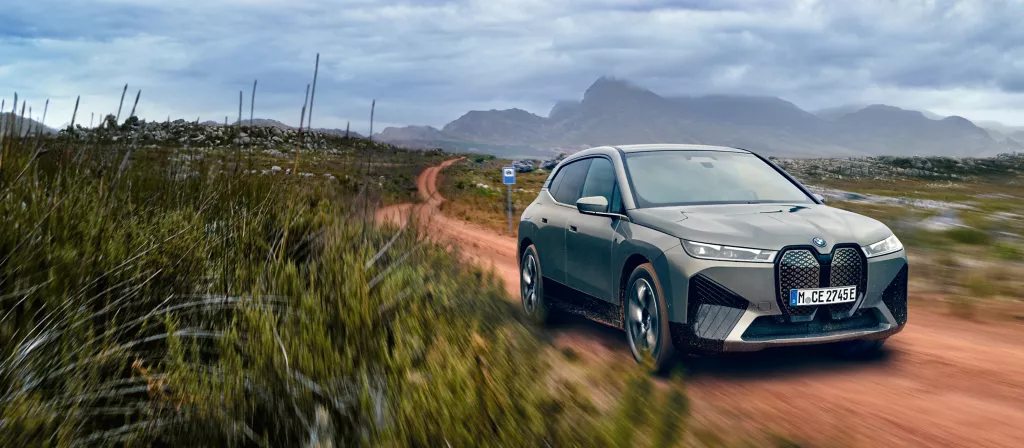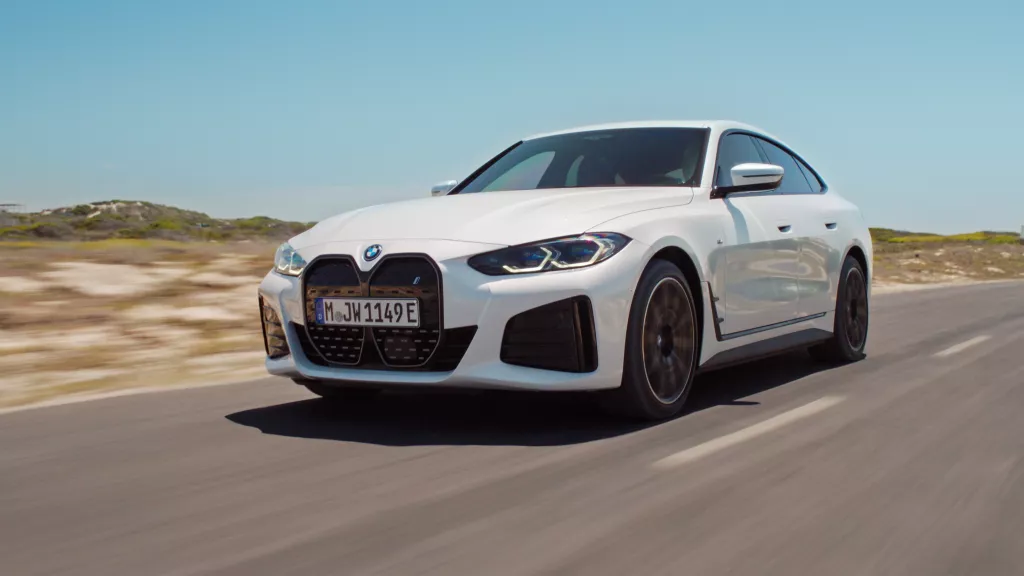BMW iX3: Energy consumption, combined WLTP in kWh/100 km[1]: 18.0–17.6; Electric range, WLTP in km[2]: 461–471
BMW iX M60: Energy consumption, combined WLTP in kWh/100 km[1]: 24.7–21.9; Electric range, WLTP in km[2]: 501–564
Step into a world of BMW e-mobility. Our electric cars combine modern driving with efficient technologies. From elegant sedans to high-performance SUVs – find the car that suits your lifestyle. Find out more about modern charging technologies within a convenient charging infrastructure. Make the most of purely electric range that will get you closer to your destinations in day-to-day life and on longer trips.
THE BENEFITS OF BMW ELECTRIC CARS.

LOCALLY EMISSION-FREE.
Now you can drive emission-free and almost silently on shorter trips or around town. This means you can reduce your CO2 emissions and noise levels in town, and at the same time set an example of environmentally-conscious mobility. Find out more about how e-mobility impacts our environment.

CHARGING MADE EASY.
Use your own wallbox to charge your electric car conveniently from the comfort of your own home. Charge it overnight to start the day with a charged battery. The benefits of having your own charging station: you save time and your electric car charges reliably at home.

LOW RUNNING COSTS.
Reduce CO2 and save costs. The ongoing service costs of an electric car are lower compared to a combustion engine car. As some parts are not susceptible to wear, like spark plugs, oil filters or an exhaust system, the service costs are lower.
ELECTRIC DRIVE TECHNOLOGY.
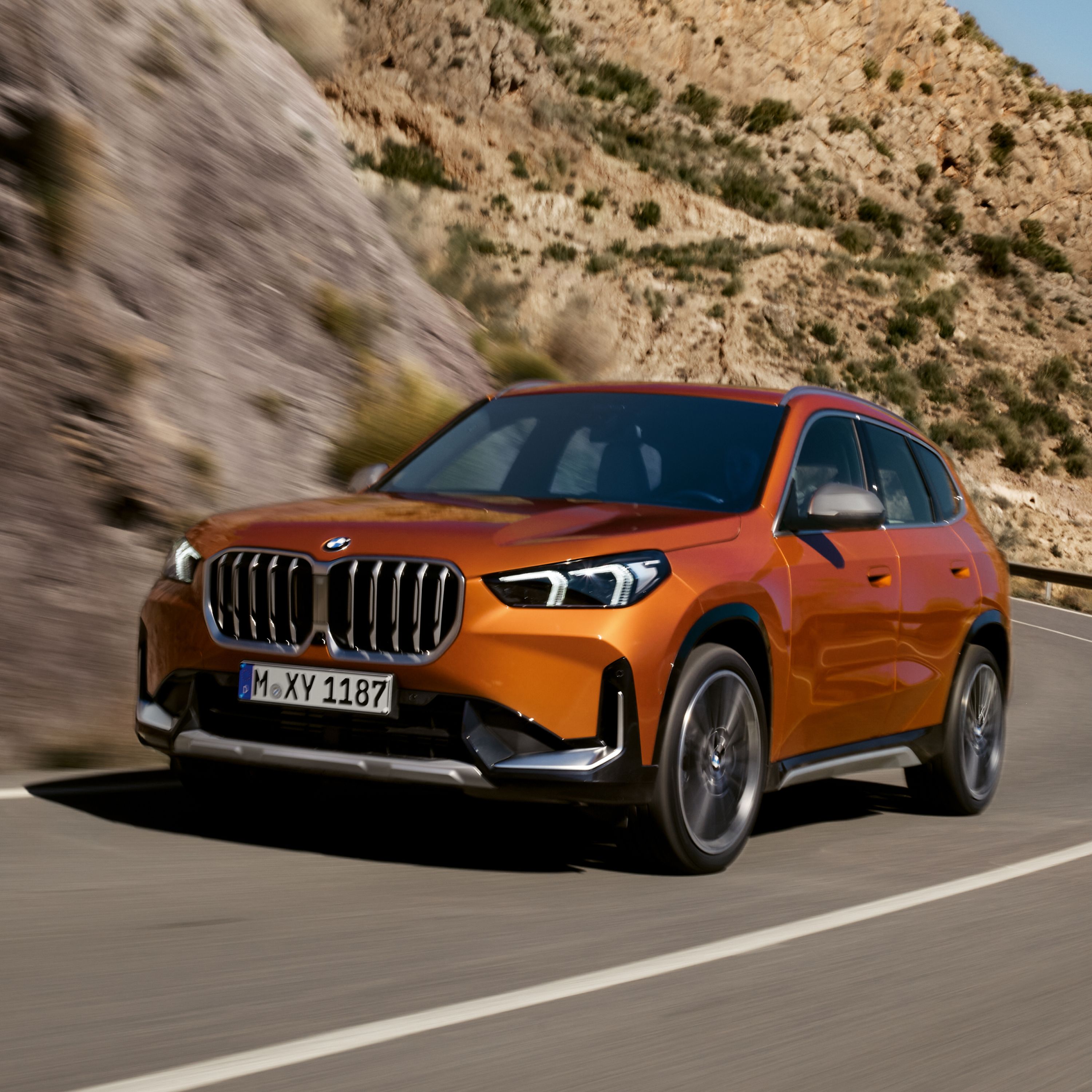
FAST ACCELERATION.
An electric motor uses its full power efficiently and spontaneously. Maximum torque is available from the start, getting you to maximum speed without shifting gear.
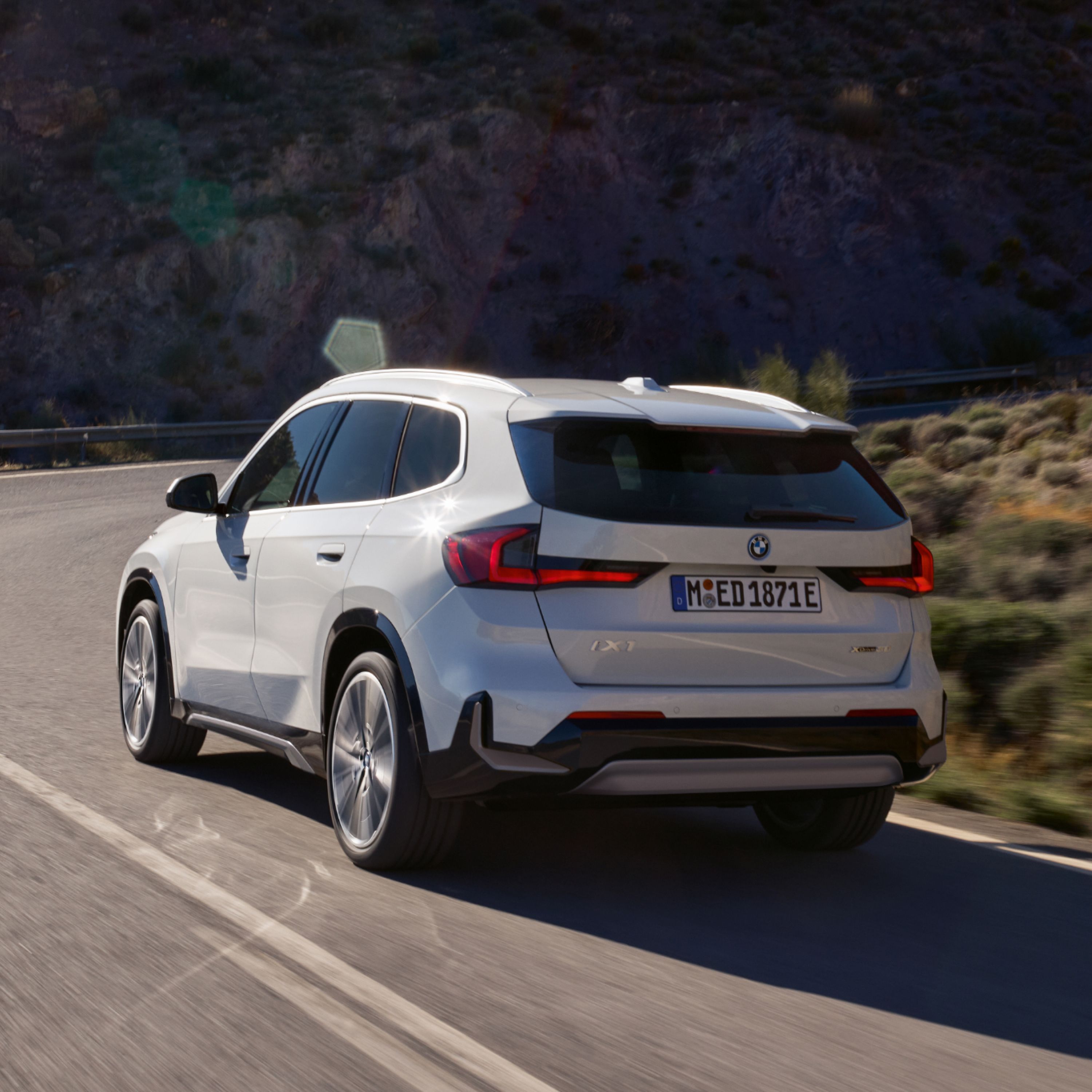
SAFE HANDLING, THANKS TO A LOW CENTRE OF GRAVITY.
Improved roadholding and a sportier driving experience. Both the motor and battery are located in the underbody of the electric car. The car therefore sits solidly on the road and corners well.
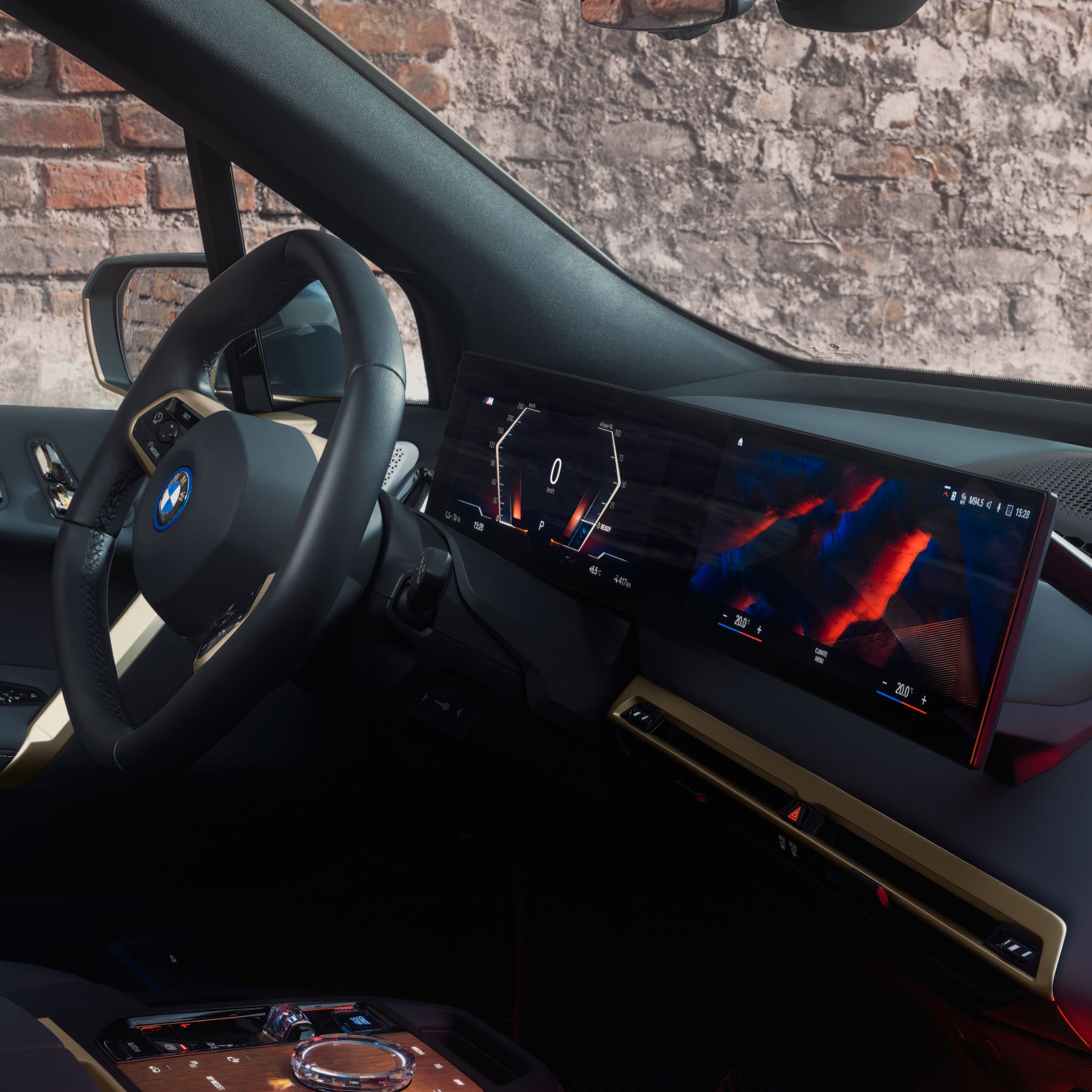
CUSTOMISABLE VEHICLE SOUND.
The sound matches your driving style. BMW IconicSounds Electric, composed by Hans Zimmer, for different sporty, efficient and personalised scenarios.
CAREFREE CHARGING OF YOUR ELECTRIC CAR.
Find out more about the various charging methods. Whether you need a fast charge on a long journey, near a café, or conveniently at your home using a wallbox. Find the right charging option for your electric car, to suit your lifestyle.
MOBILITY TOMORROW.
BMW iX1 xDrive30: Energy consumption, combined WLTP in kWh/100 km[1]: 18.1–16.9; Electric range, WLTP in km[2]: 417–439
BMW i5 eDrive40: Energy consumption, combined WLTP in kWh/100 km[1]: 18.9–15.9; Electric range, WLTP in km[2]: 498–582
BMW iX3: Energy consumption, combined WLTP in kWh/100 km[1]: 18.0–17.6; Electric range, WLTP in km[2]: 461–471
BMW i7 xDrive60 Sedan: Energy consumption, combined WLTP in kWh/100 km[1]: 19.6–18.5; Electric range, WLTP in km[2]: 589–624
BMW i4 eDrive40 Gran Coupé: Energy consumption, combined WLTP in kWh/100 km[1]: 19.1–16.1; Electric range, WLTP in km[2]: 492–590
BMW iX M60: Energy consumption, combined WLTP in kWh/100 km[1]: 24.7–21.9; Electric range, WLTP in km[2]: 501–564
THE WIDE RANGE OF BMW ELECTRIC CAR MODELS.
Experience the future of mobility with BMW i Series electric models. Whether you're looking for a compact electric car, elegant saloon, spacious touring, or all-electric SUV – our range of electric cars is guaranteed to have the right type of vehicle for everyone. BMW i Series electric car models combine innovative technology and materials with an impressive design and maximum efficiency.
RANGE OVERVIEW
BMW ELECTRIC CARS

BMW i5 eDrive40 Sedan: Energy consumption, combined WLTP in kWh/100 km[1]: 18.9–15.9; Electric range
BMW i7 xDrive60 Sedan: Energy consumption, combined WLTP in kWh/100 km[1]: 19.6–18.5

BMW iX1 eDrive20: Energy consumption, combined WLTP in kWh/100 km[1]: 17.2–15.4
BMW iX2 xDrive30: Energy consumption, combined WLTP in kWh/100 km[1]: 17.8–16.3
BMW iX xDrive40: Energy consumption, combined WLTP in kWh/100 km[1]: 21.4–19.4
FOR CUSTOMERS BY CUSTOMERS: ELECTROMOBILITY IN EVERYDAY LIFE.
"I quickly realised how much fun driving an electric vehicle can be."
Once BMW, always BMW. Once electric, always electric. Watch the video to see how a long-time fan of sporty combustion engines discovered the fascination and driving pleasure of all-electric mobility.
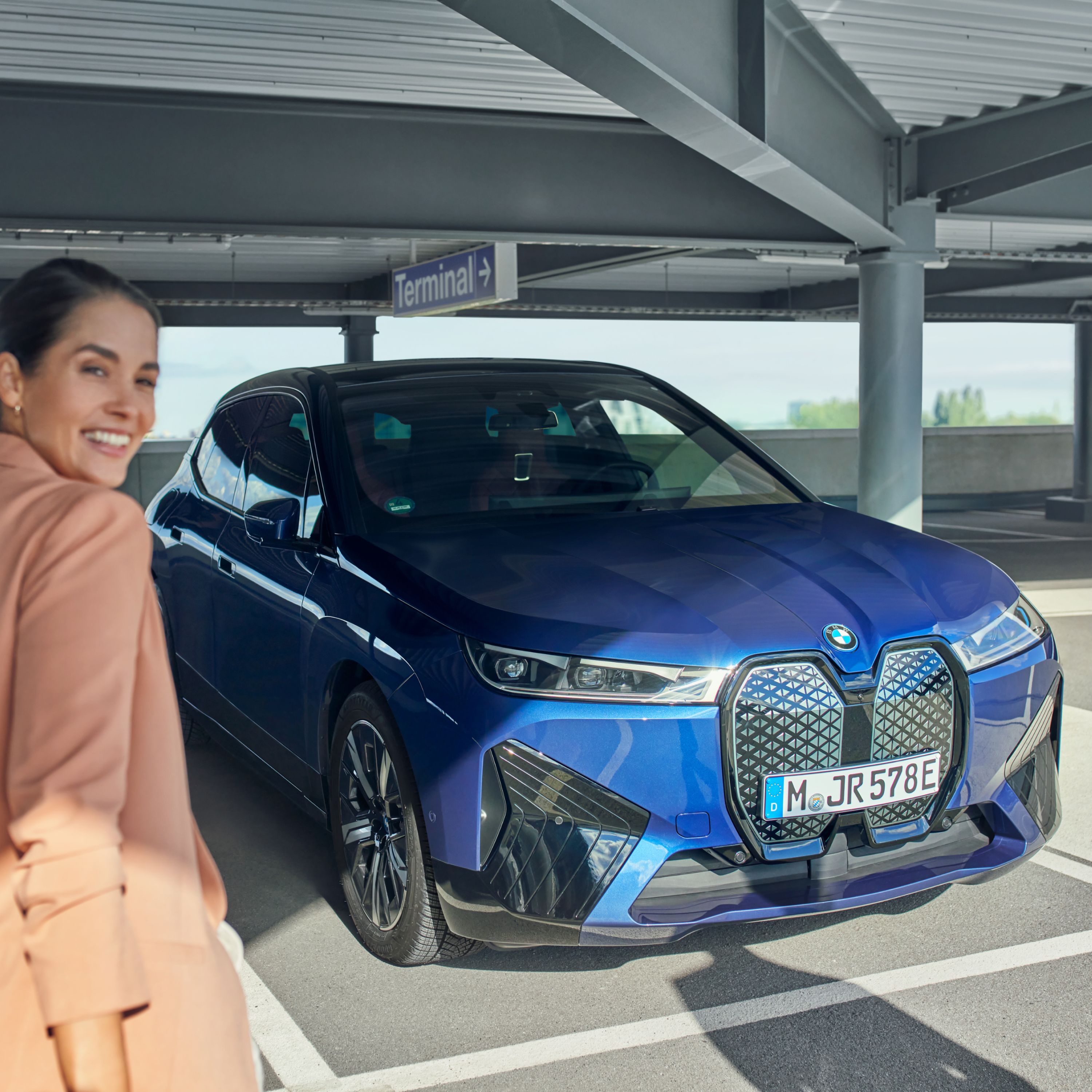
THE COSTS OF ELECTRIC CARS.
What does it cost to charge an electric car? Save money with lower service costs and lower taxes. Are there subsidies or incentives for electric cars? Find out if an electric car makes sense for you.
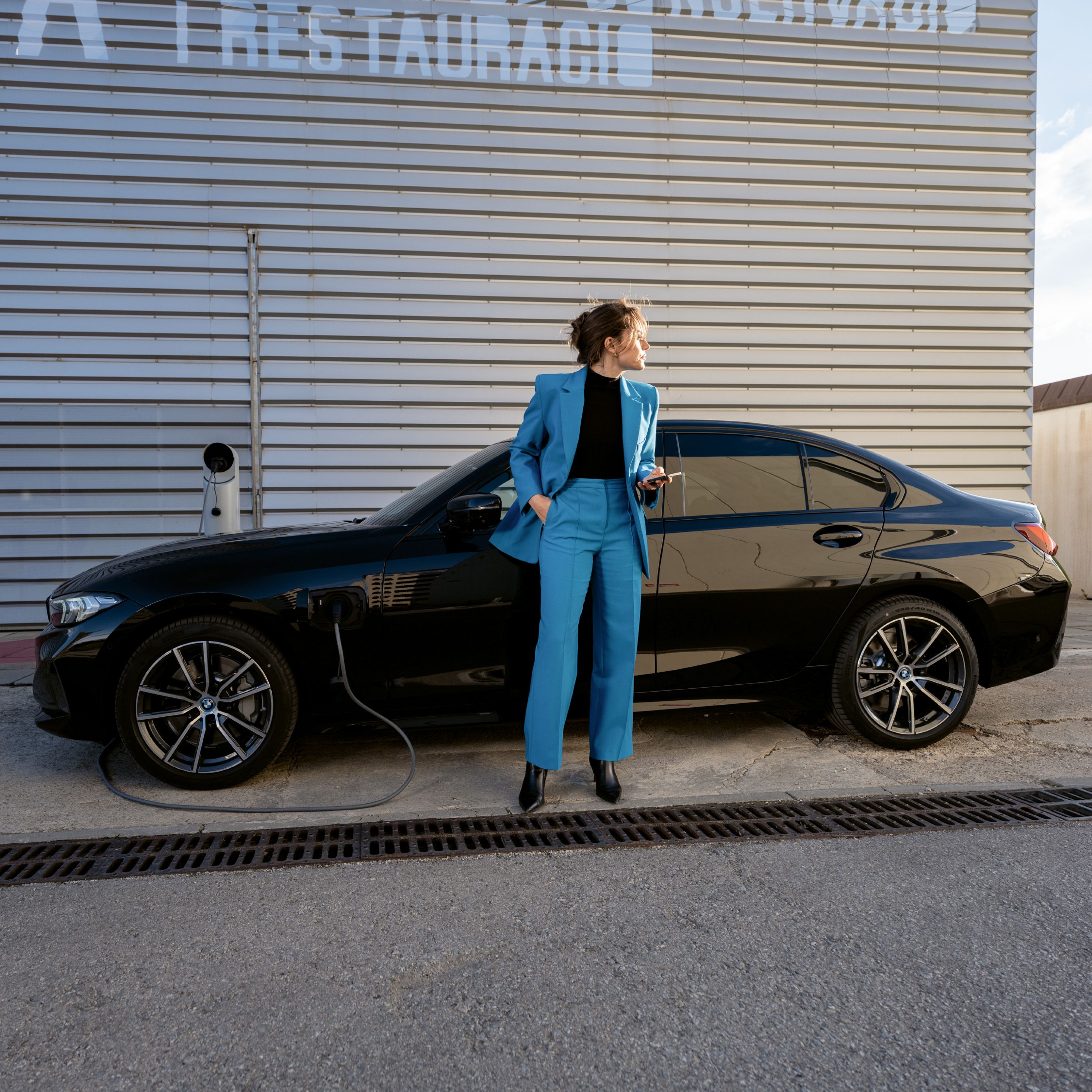
PLUG-IN-HYBRIDS:
FLEXIBLE DRIVING.
BMW plug-in hybrid models combine the best of both worlds. You can drive emission-free with their electric drive over shorter distances or around town. And, as usual, their petrol engine will support you on longer journeys.
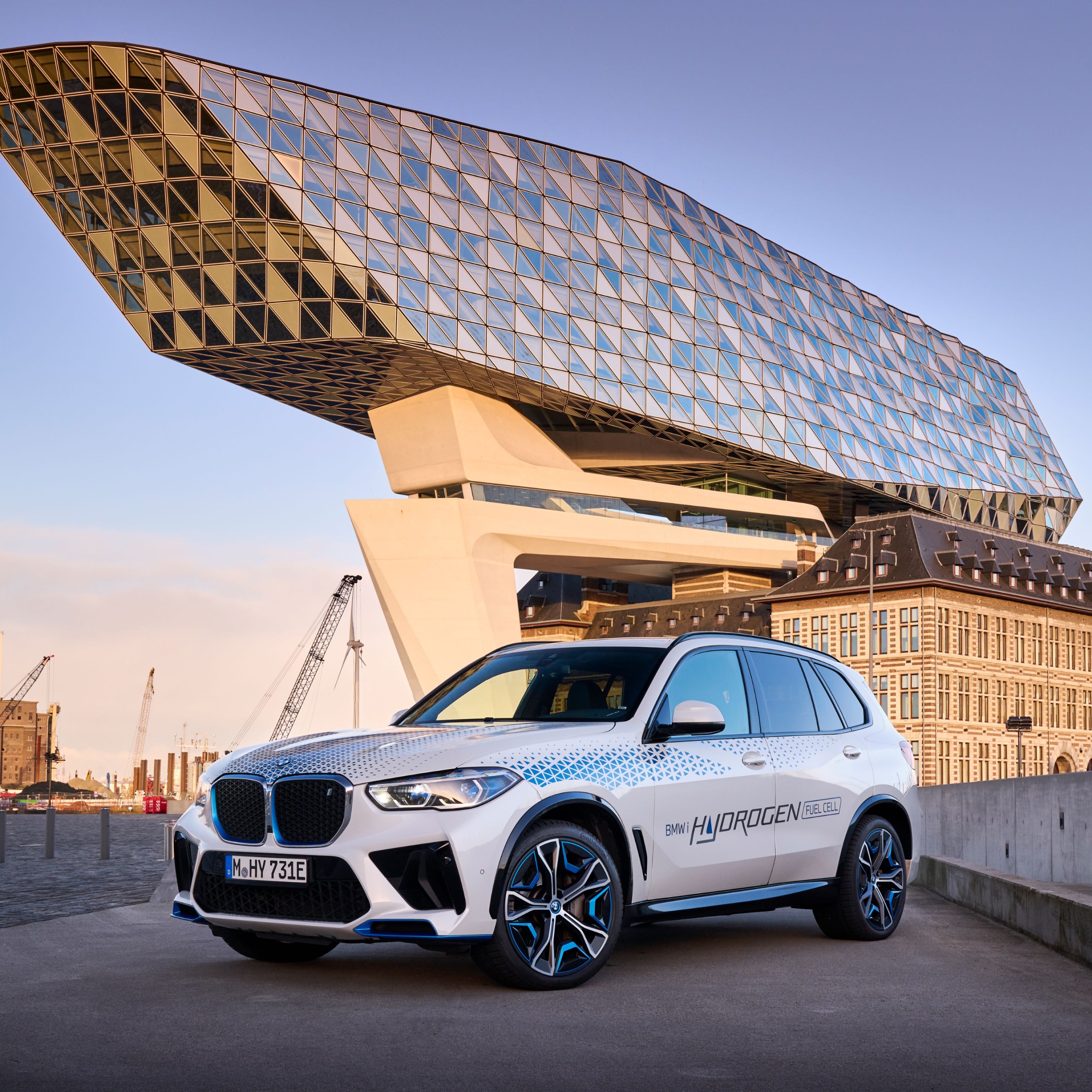
HYDROGEN: THE FUEL OF THE FUTURE.
The BMW iX5 Hydrogen is BMW’s innovative hydrogen car. This concept vehicle takes only 3-4 minutes to refuel for a range of up to 504 km. So you can use it like a combustion engine vehicle – with all the benefits of e-mobility.
ELECTRIC CAR OFFERS
FIND YOUR BMW ELECTRIC CAR.
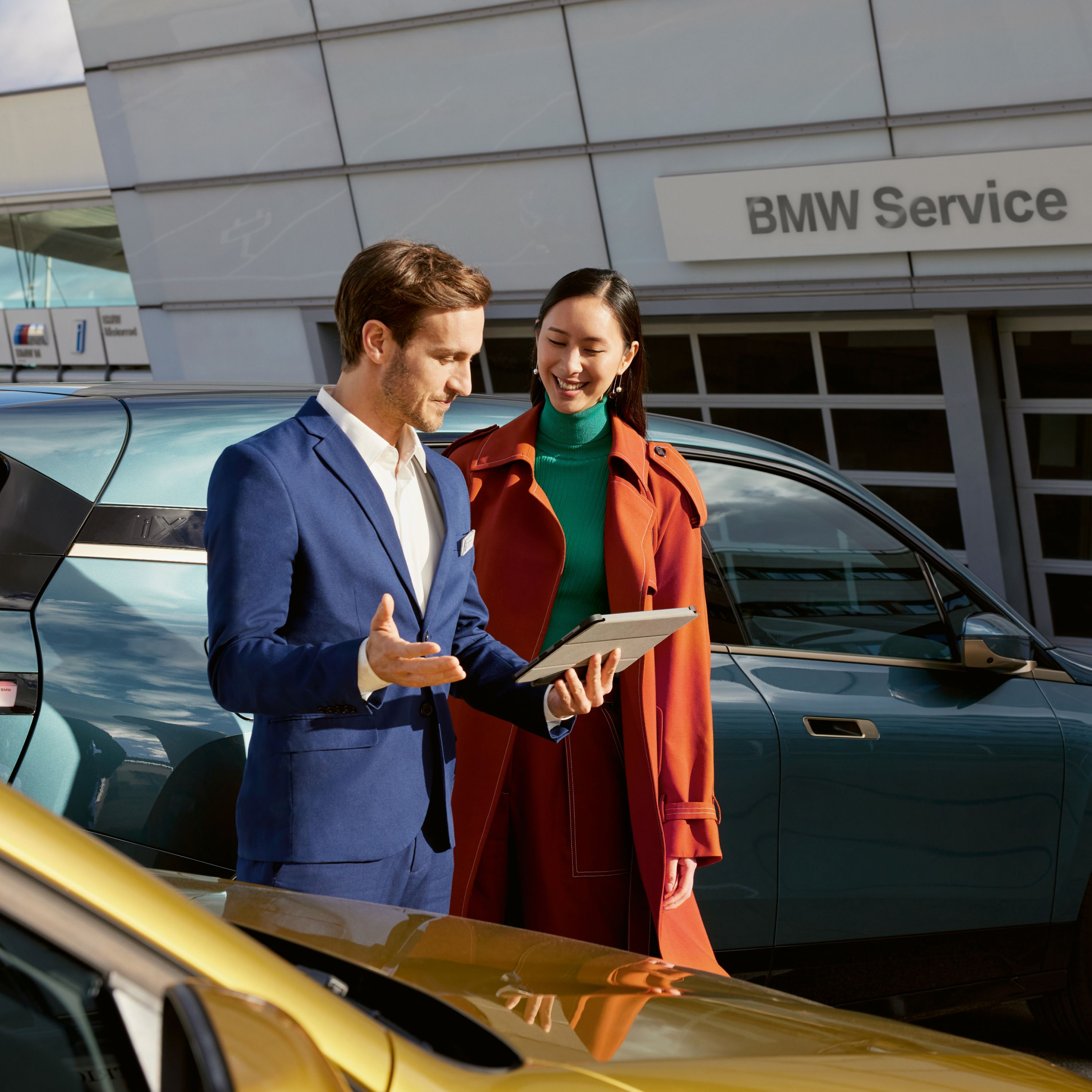
YOUR NEW BMW ELECTRIC CAR.
Find available BMW models and buy or lease your BMW directly online. Fully electric cars and plug-in-hybrids. For example, the BMW iX, the BMW i4 or the BMW i5. There are many offers to choose from.
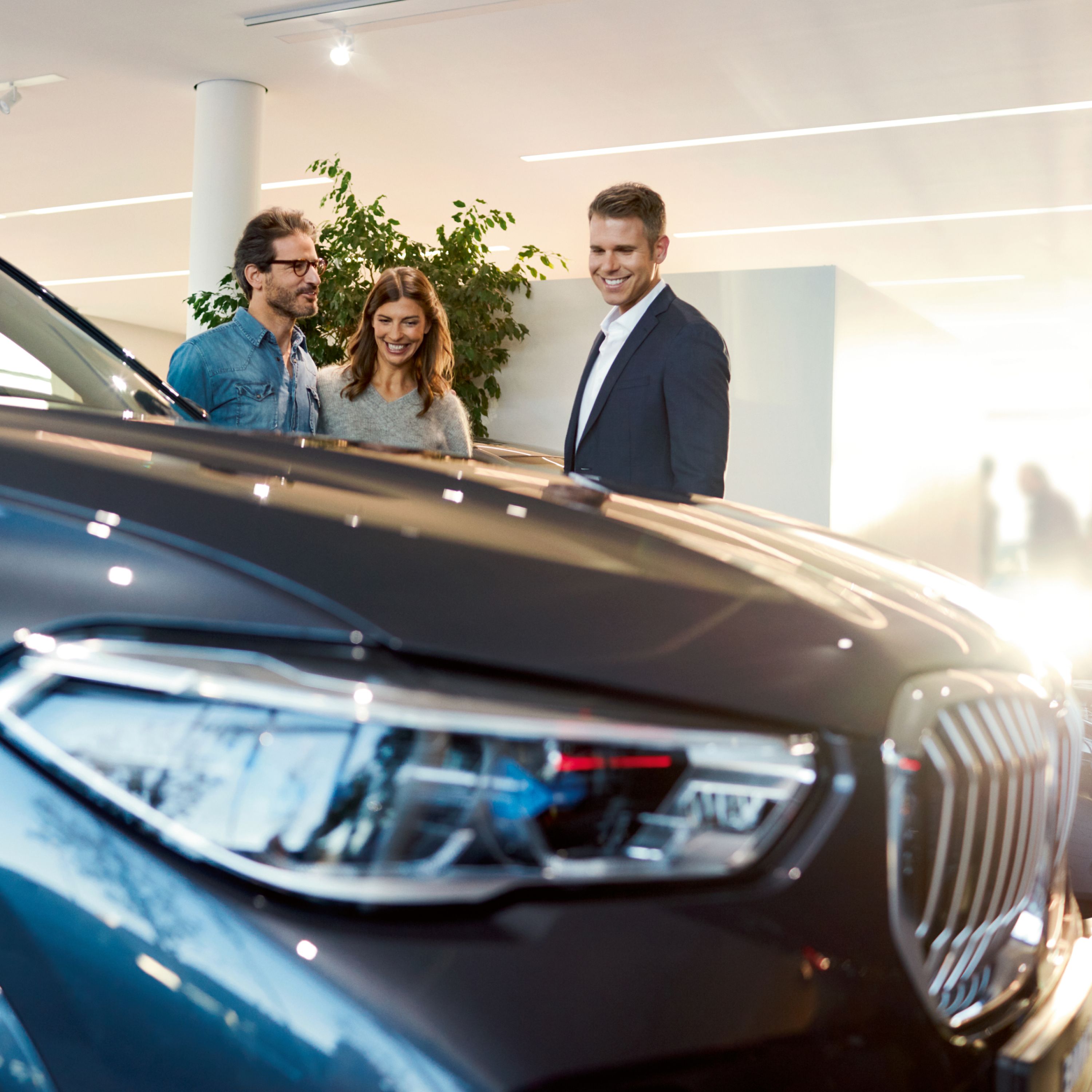
USED BMW ELECTRIC CARS.
Used BMW cars have no reason to hide. The same of course applies for electric cars. Find available used BMW electric cars, for sale or to lease.
FREQUENTLY ASKED QUESTIONS.
MORE INFORMATION.
Consumption and CO2 emissions.
BMW iX1 xDrive30: Energy consumption, combined WLTP in kWh/100 km[1]: 18.1–16.9; Electric range, WLTP in km[2]: 417–439
BMW i5 eDrive40 Touring: Energy consumption, combined WLTP in kWh/100 km[1]: 19.3-16.5; Electric range, WLTP in km[2]: 483–560
BMW i5 eDrive40 Sedan: Energy consumption, combined WLTP in kWh/100 km[1]: 18.9–15.9; Electric range, WLTP in km[2]: 498–582
BMW iX3: Energy consumption, combined WLTP in kWh/100 km[1]: 18.0–17.6; Electric range, WLTP in km[2]: 461–471
BMW i7 xDrive60 Sedan: Energy consumption, combined WLTP in kWh/100 km[1]: 19.6–18.5; Electric range, WLTP in km[2]: 589–624
BMW i4 eDrive40 Gran Coupé: Energy consumption, combined WLTP in kWh/100 km[1]: 19.1–16.1; Electric range, WLTP in km[2]: 492–590
BMW iX M60: Energy consumption, combined WLTP in kWh/100 km[1]: 24.7–21.9; Electric range, WLTP in km[2]: 501–564
[1] Official data for fuel consumption, CO2 emissions, power consumption and electric range was determined in accordance with the prescribed measuring procedure and corresponds to European Regulation (EC) 715/2007 in the applicable version. For ranges, data determined as per WLTP takes into account any optional equipment (available on the German market in this case). For vehicles that have been newly type approved since 1 January 2021, only the official data according to WLTP exists. In addition, NEDC values are deleted from the certificates of conformity as of 1 January 2023 by EC regulation 2022/195. For more information about NEDC and WLTP measuring procedures visit www.bmw.com/wltp
Further information about fuel consumption and official model-specific CO2 emissions of new passenger cars can be found in the "Guideline for fuel consumption, CO2 emissions and electric power consumption for new passenger cars", available free of charge at all points of sale, at the Deutsche Automobil Treuhand GmbH (DAT), Hellmuth-Hirth-Str. 1, 73760 Ostfildern-Scharnhausen, Germany, and under https://www.dat.de/co2/.
[2] Range depends on various factors, in particular: individual driving style, route characteristics, outside temperature, heating/air conditioning, pre-conditioning.
[3] The charging performance depends on the state of charge, ambient temperature, individual driving profile and use of auxiliary consumers. The ranges shown are based on the WLTP best case. The charging times apply to ambient temperatures of 23 degrees Celsius after a preceding drive and may differ depending on the usage behaviour.
